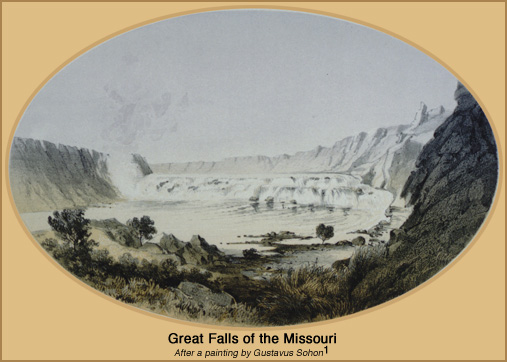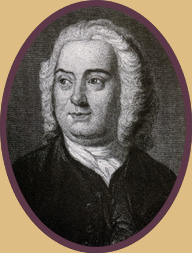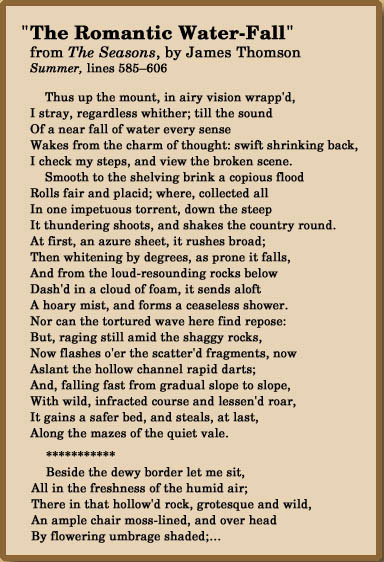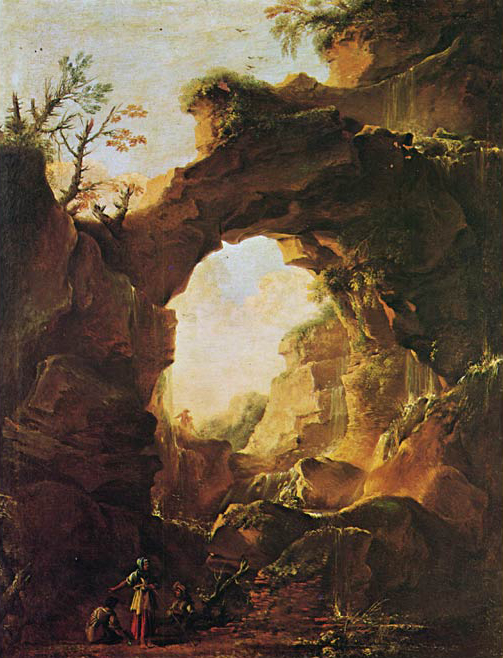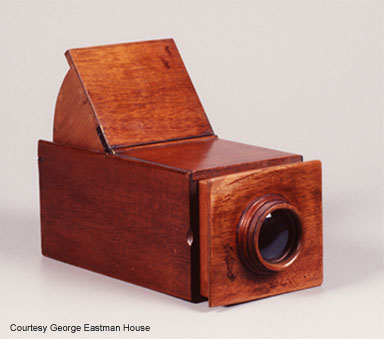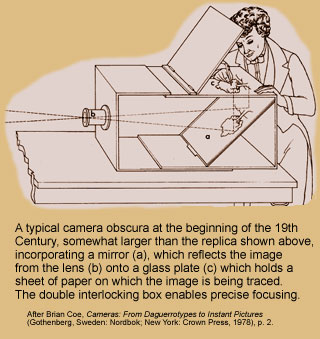Lewis’s First Two Wishes
Great Falls of the Missouri
“Sublimely grand object” after Gustavus Sohon (1825–1903)[1]Reports of Explorations and Surveys, to ascertain the most practicable and economical route for a railroad from the Mississippi River to the Pacific Ocean. Made under the direction of the Secretary … Continue reading
On Thursday, 13 June 1805, Meriwether Lewis, walking alone in advance of his small detachment—interpreter George Drouillard and privates Joseph Field, George Gibson, and Silas Goodrich—arrived at the Great Falls of the Missouri. Thrilled by the sight, Lewis spent four hours contemplating the sight, and writing a detailed 900-word account of what he saw and how he felt about it. “After wrighting this imperfect discription,” he declared:
I again viewed the falls and was so much disgusted with the imperfect idea which it conveyed of the scene that I determined to draw my pen across it and begin agin, but then reflected that I could not perhaps succeed better than pening the first impressions of the mind.
I wished for the pencil of Salvator Rosa, or the pen of Thompson, that I might be enabled to give to the enlightened world some just idea of this truly magnifficent and sublimely grand object, which has from the commencement of time been concealed from the view of civilized man. But this was fruitless and vain.
Vain indeed, but not entirely fruitless. While Lewis wished for the talent to paint with the technique of the one, or to write with the eloquence of the other, their names alone sufficed to suggest the essence of his experience. Lewis may have borrowed those two metaphors from pages 64-65 of Benjamin Smith Barton‘s Elements of Botany (1803), a copy of which Barton loaned to Lewis to take along on the expedition. Barton was referring to the beauty of fall colors in Pennsylvania when he wrote: “Nothing can be more picturesque than an American forest, at this season. The beauties of the scenery will be described by some future Thompson, or exhibited on canvass by the pencil of an American Salvator Rosa.” Barton’s readers would have known—as would Lewis’s—that the “pencil” of a painter such as Rosa would not have been a lead pencil but a paintbrush made of fine hair that tapered to a point, which was used for delicate detail work.[2]Lewis used the word pencil at Fort Clatsop on 21 February 1806, in describing the Oregon bobcat: “the ears are black on the outer side covered with fine short hair except at the upper point … Continue reading
Without a doubt “the enlightened world” would have gotten his drift. Unfortunately, Nicholas Biddle, the editor of the first (1814) edition of the journals, either did not get it, or else chose to ignore it perhaps as hyperbole, for he omitted Lewis’s clues from his narrative. Elliott Coues rescued the lines and placed them in a footnote to his 1893 edition of Biddle’s Journals of the Expedition . . . to the sources of the Missouri, but by that time the significances of both artists had completely faded from popular awareness.[3]Elliott Coues, ed., The History of the Lewis and Clark Expedition, by Meriwether Lewis and William Clark (3 vols., New York: Francis P. Harper, 1893; reprint, Dover Publications, 1965), II:366.
Perhaps part of Lewis’s enthusiasm had arisen from his sense of satisfaction, even triumph, at having made the right decision back at Maria’s River, although he gave no hint of that in his journal entry. In any case, this was to prove the artistic climax of the entire expedition. Never again was Lewis moved to invoke those symbolic names.
Lewis’s Third Wish
First Picture
Principal Cascade of the Missouri
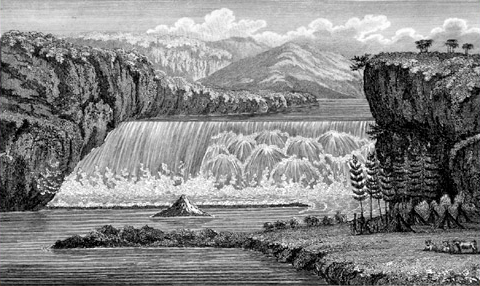
Courtesy of Watzek Library, Lewis & Clark College, Portland, Oregon
Engraved from a drawing by John James Barralet (1807)
Note: Bold text in the journal entries below, identify features in the above illustration.
His third wish might have come true had his pre-expedition planning and purchasing extended that far. “I most sincerely regreted that I had not brought a crimee obscura [camera obscura] with me” he wrote, “by the assistance of which even I could have hoped to have done better, but alas this was also out of my reach.”
Nevertheless, he refused to drop the matter:
I therefore, with the assistance of my pen only, indeavoured to trace some of the stronger features of this seen, by the assistance of which, and my recollection, aided by some able pencil, I hope still to give to the world some faint idea of an object which at this moment fills me with such pleasure and astonishment.
Regrettably, no sketches by Lewis have ever been found. In January 1810, while searching among the effects of the recently deceased Lewis, Clark noted that he came upon some “imperfect drawings” of the falls of the Missouri, but their fate thereafter is a mystery.[4]Stephen Dow Beckham, et al, The Literature of the Lewis and Clark Expedition: A Bibliography and Essays (Portland: Lewis & Clark College, 2003), p. 156. They may have been the drawings of the falls of the Missouri and Columbia that Lewis commissioned from the Irish-born John James Barralet in 1807, of which the “Principal Cascade of the Missouri” appeared in the Dublin printing (1817) of Biddle’s edition of the journals. It was decidedly imperfect, and could have done but little to inspire general admiration.
No known painting or drawing was made of the Falls until the early 1850s when Gustavus Sohon (1825-1903), a gifted young German immigrant who enlisted in the army in 1852, became an interpreter, guide, and topographic artist on the government-sponsored northern railroad survey led by Isaac Stevens in 1853-54. Lithographs made of a dozen of Sohon’s many drawings were published in the expedition’s report. One of them was that of the Great Falls of the Missouri, shown above. The earliest existing photograph of the Great Falls was taken by F. Jay Haynes in 1880.
Descriptions: Lewis v. Biddle
A comparison of Lewis’s description with Nicholas Biddle’s paraphrase serves to illustrate the stylistic contrasts between the two narrators. Biddle’s orderly, thoughtful phrasing is smooth and articulate. Lewis’s own words combine the emotion-soaked spontaneity of a friendly discourse with the energy of an on-the-scene report.
Lewis’s Description
I had proceeded on this course about two miles with Goodrich at some distance behind me whin my ears were saluted with the agreeable sound of a fall of water and advancing a little further I saw the spray arrise above the plain like a collumn of smoke which would frequently disapear again in an instant caused I presume by the wind which blew pretty hard from the S. W.
I did not however loose my direction to this point which soon began to make a roaring too tremendious to be mistaken for any cause short of the great falls of the Missouri. There I arrived about 12 OClock having traveled by estimate about 15 Miles [from camp]. I hurryed down the hill which was about 200 feet high and difficult of access, to gaze on this sublimely grand specticle.
I took my position on the top of some rocks about 20 feet high opposite the center of the falls. This chain of rocks appear once to have formed a part of those over which the waters tumbled, but in the course of time has been seperated from it to the distance of 150 yards lying prarrallel to it and forming a butment against which the water after falling over the precipice beats with great fury; this barrier extends on the right to the perpendicular clift which forms that board [side] of the river but to the distance of 120 yards next to the clift it is but a few feet above the level of the water, and here the water in very high tides appears to pass in a channel of 40 yds. next to the higher part of the ledg of rocks; on the left it extends within 80 or ninty yards of the lard. Clift which is also perpendicular; between this abrupt extremity of the ledge of rocks and the perpendicular bluff the whole body of water passes with incredible swiftness.
immediately at the cascade the river is about 300 yds. wide; about ninty or a hundred yards of this next the Lard. bluff is a smooth even sheet of water falling over a precipice of at least eighty feet, the remaining part of about 200 yards on my right formes the grandest sight I ever beheld, the hight of the fall is the same of the other but the irregular and somewhat projecting rocks below receives the water in it’s passage down and brakes it into a perfect white foam which assumes a thousand forms in a moment sometimes flying up in jets of sparkling foam to the hight of fifteen or twenty feet and are scarcely formed before large roling bodies of the same beaten and foaming water is thrown over and conceals them. In short the rocks seem to be most happily fixed to present a sheet of the whitest beaten froath for 200 yards in length and about 80 feet perpendicular.
the water after decending strikes against the butment before mentioned or that on which I stand and seems to reverberate and being met by the more impetuous courant they role and swell into half formed billows of great hight which rise and again disappear in an instant.
this butment of rock defends a handsom little bottom of about three acres which is deversified and agreeably shaded with some cottonwood trees; in the lower extremity of the bottom there is a very thick grove of the same kind of trees which are small, in this wood there are several Indian lodges formed of sticks. A few small cedar grow near the ledge of rocks where I rest.
below the point of these rocks at a small distance the river is divided by a large rock which rises several feet above the water, and extends downwards with the stream for about 20 yards.
I see several skelletons of the buffaloe[5]Barralet has discreetly but imperfectly depicted them as living bovines of questionable lineage. lying in the edge of the water near the Stard. bluff which I presume have been swept down by the current and precipitated over this tremendious fall.
–Meriwether Lewis, 13 June 1805 (638 words)
Nicholas Biddle’s paraphrase (1814)
Captain Lewis had gone about two miles, when his ears were saluted with the agreeable sound of a fall of water, and as he advanced a spray, which seemed driven by the high southwest wind, arose above the plain like a column of smoke, and vanished in an instant. Toward this point he directed his steps; the noise increased as he approached, and soon became too tremendous to be mistaken for anything but the great Falls of the Missouri. Having traveled seven miles after first hearing the sound, he reached the falls about twelve o’clock.
The hills as he approached were difficult of access and 200 feet high. Down these he hurried with impatience; and, seating himself on some rocks under the center of the falls, enjoyed the sublime spectacle of this stupendous object, which since the creation had been lavishing its magnificence upon the desert, unknown to civilization.
The river immediately at this cascade is 300 yards wide, and is pressed in by a perpendicular cliff on the left, which rises to about 100 feet and extends up the stream for a mile; on the right the bluff is also perpendicular for 300 yards above the falls. For 90 or 100 yards from the left cliff, the water falls in one smooth, even sheet, over a precipice of at least 80 feet.
The remaining part of the river precipitates itself with a more rapid current, but being received as it falls by the irregular and somewhat projecting rocks below, forms a splendid prospect of perfectly white foam, 200 yards in length and 80 in perpendicular elevation. This spray is dissipated into a thousand shapes, sometimes flying up in columns of 15 or 20 feet, which are then oppressed by larger masses of the white foam, on all which the sun impresses the brightest colors of the rainbow. As it rises from the fall it beats with fury against a ledge of rocks which extend across the river at 150 yards from the precipice.
From the perpendicular cliff on the north, to the distance of 120 yards, the rocks rise only a few feet above the water; when the river is high the stream finds a channel across them 40 yards wide and near the higher parts of the ledge, which then rise about 20 feet and terminate abruptly within 80 or 90 yards of the southern side. Between them and the perpendicular cliff on the south the whole body of water runs with great swiftness.
A few small cedars grow near this ridge of rocks, which serves as a barrier to defend a small plain of about three acres, shaded with cottonwood, at the lower extremity of which is a grove of the same tree, where are several Indian cabins of sticks; below the point of them the river is divided by a large rock, several feet above the surface of the water, and extending down the stream for 20 yards. At the distance of 300 yards from the same ridge is a second abutment of solid perpendicular rock about 60 feet high, projecting at right angles from the small plain on the north for 134 yards into the river. After leaving this, the Missouri again spreads itself to its usual distance of 300 yards, though with more than its ordinary rapidity.[6][Nicholas Biddle, ed.], History of the expedition under the command of Captains Lewis and Clark. . . . Philadelphia, 1814. Reprint; 2 vols. (New York: The Heritage Press, 1962), 1:159–60.
The Pen of Thomson
James Thomson’s most ambitious, popular and durable work was the epic blank-verse poem, The Seasons, published in four episodes between 1726 and 1730, and frequently revised by the poet until 1741.[7]The excerpt quoted above is from The Seasons, containing Spring, Summer, Autumn, Winter, by James Thomson, with the life of the author, by Dr. Samuel Johnson. Philadelphia, printed by John Bioren . . … Continue reading Unlike his urbane and witty British contemporary, Alexander Pope (1688-1744), Thomson focused his poetic vision on rural scenes, from mountains to plains, from the Arctic to the Tropics, as the seasons reflect the pulse of Nature, of which humans are portrayed as patient and dutifully worshipful observers. Dispensing with the Aristotelian principle of beginning-middle-end, he allowed his subject to dictate a linear, sequential form, and in that regard The Seasons was a triumph of sustained style, the four sections extending to a total of 5,541 lines.
Thomson’s poem reflected three aspects of the new popular attitude toward wilderness that emerged during the eighteenth century. First, it gave meaning to the concept of the sublime. Previous generations had been hostile toward untamed places, regarding wilderness in general as chaotic, ugly, accursed. Mountains, for instance, were earth’s deformities, and forests, like all unpeopled and uncivilized realms, were feared and despised. According to the concept of the sublime, however, settings that were solitary, awesome, mysterious, or even terrifying were considered, as Lewis was to describe the second of the five falls on the Missouri, “pleasingly beautiful.”[8]Meriwether Lewis, 14 June 1805. On the evolution of the concept of the sublime, see Roderick Nash, Wilderness and the American Mind (rev. ed., 1973; New Haven: Yale University Press, 1967), Chapter … Continue reading Second, The Seasons embodied the principle of deism, a system based on belief in a creator who set the universe in motion to operate forever as a beautiful machine. Thomson recognized the divine creator everywhere.
Hail Source of Beings! Universal Soul
Of heaven and earth! Essential Presence, hail!
To Thee I bend the knee; to Thee my thoughts,
Continual, climb; who, with a master-hand
Hast the great whole into perfection touch’d.[9]Thomson, The Seasons (Philadelphia, 1801), 38.
He concluded his poem with a long and resonant “Hymn to Nature.”
Finally, it was Thomson’s style of writing about nature that readers like Lewis admired. With the eye of a painter, Thomson studied the forms, colors, motions, temperatures and textures of rural nature, and recorded them faithfully and objectively. Nearly every phrase captures a detail in vivid, crystalline clarity.
We have no clue that Lewis had read, much less remembered, the passage about “The Romantic Water-Fall,” but we may surmise that all he finally wished for after contemplating the Great Falls of the Missouri for four hours that day, was a Thomsonian power with words—the capacity to see every detail, and the eloquence to turn a phrase spontaneously, with passion and simplicity.
The Seasons was published often in Great Britain until the 1860s, and reprints appeared in the United States beginning in 1797, with several more American editions following during the next seventy years. Some editions included woodcuts or etchings, always focusing on people, such as farmers or lovers whose lives are more or less dramatically affected by seasonal weather. Meanwhile, the poem was the inspiration for the oratorio of the same name composed in 1801 by Franz Joseph Haydn (1732-1809), which was a musical testament to his own profound love of nature.
The Sublime in Nature
The first adjective that sprang to Lewis’s mind when he beheld the Great Falls of the Missouri was . . . sublime. He “hurryed down the hill . . . to gaze on this sublimely grand specticle.” Sublimity was not a quality that inhered in the scene before him, but was the experience of his mind, a self-conscious awareness of the wildness surrounding him, arousing awe and wonder, and inspiring intense feelings of self-realization. It was inevitable that he should proceed to summarize his feelings by invoking a name that by the middle of the eighteenth century had become a synonym for the sublime, Salvatore Rosa (1615-1673).[10]The best discussion of the concept of the sublime, and of the roles of Salvatore Rosa and James Thomson in its history, is in Albert Furtwangler’s Acts of Discovery: Visions of America in the … Continue reading
Rosa was an Italian artist whose landscapes and seascapes made him famous during his lifetime. His etchings—or those by imitators and counterfeiters—reproduced in magazines, newspapers and books throughout Europe and civilized North America, held his name and his works in popular admiration long after his death.[11]Etching is a method of drawing images on a metal plate—usually copper—by coating it with an acid-resistant “etching ground” consisting of beeswax, bitumen and resin, through which the … Continue reading At the mere mention of Rosa’s name, Lewis’s readers, from Jefferson on down, could have summoned before their minds’ eyes their own perfect pictures of the Great Falls of the Missouri River.
Rosa’s Grotto with Cascades (above) is a fictitious scene embodying some of the elements of sublimity. It can serve us as a catalog of the basic elements of sublimity in nature. The hour is either mid-morning or mid-afternoon. In the warm, radiant sunshine, two vaguely recognizable visitors, drawn to the dizzying brink of an amphitheater by the rumble and splash of falling water, stand awestruck by its terrible majesty. Far below, three common people (we can tell by the way they’re dressed) converse contentedly, oblivious of the romantic grandeur surrounding them. They are at ease in the cool, pungent, mossy shade beside a decaying tree trunk and the remains of a ruined stone wall, the latter revealing that a long-dead resident once embellished the place with some sort of an “improvement.” Indeed, taken together, the human figures, provide only the measure of the scene’s proportions and meanings.
Even as Lewis was thinking of Rosa, painters of his own generation—Eugene Delacroix (1798-1863) in France, and J.M.W. Turner (1775-1851) in England—were beginning to establish the foundations of the Romantic era, with more impassioned and less homocentric views of wilderness. Human beings in their views, if present, are essentially stage dressing, often victims of nature’s superior powers. In the 1820s and ’30s a host of young traveling and immigrant artists would march across the American West, drawn by the romance of Indian culture and vast panoramic vistas. They included Titian Peale, Samuel Seymour, George Catlin, Karl Bodmer, John Mix Stanley, Paul Kane, Seth Eastman, Alfred Jacob Miller, and Gustavus Sohon.
Inexplicably, Salvatore Rosa’s name is absent today from nearly all books on the history of art.
The Pencil of Rosa
Now, place yourself in Meriwether Lewis’s shoes, back in June 1805. You are the first American of European descent to enter this setting. You, like him, have had this kind of experience before—a glorious sunrise on a cool morning; an effulgent sunset that tinted the diminishing clouds red after a stormy day; a vibrating rainbow; a jagged mountain peak against a clear blue sky; a deep shady canyon in the torrid desert. Your very being was suffused with a thrill you couldn’t find words to describe.
That’s where Lewis stood, painfully speechless before that awe-inspiring scene. How could he ever give to the rest of the world even “some faint idea” of the scene which was filling him with “such pleasure and astonishment.” Only art could serve him.
It would be easy if he were only as eloquent a poet as James Thomson (1700-1748)—”the pen of Thompson” being a metaphor for his genius. He could express the sublimity of it if he were as great a painter of raw nature as the Italian master Salvatore Rosa (1615-1673)—whose “pencil” stood for his mastery of his art.
You, me? When nature defies our tongues, we reach for our cameras and record the picture in pixels. (But see Illustrating the Falls with A.E. Mathews’ discussion of the differences between a photograph and a drawing of a scene in nature.) The best Lewis could do was draw his own sketch (now lost) on his way home in July 1806.
Let me disburden you of your natural opinion that Rosa’s instrument must have been a familiar lead-pencil—a little rod made not of lead but of graphite mixed with clay that was inserted into a sleeve of cedar or some other wood, and sharpened to a fine point. Prototypes of the lead-pencil first appeared in England in the 16th century, but the ink-less writing instrument as we know it was invented in France in 1795, and slowly caught on during the first quarter of the 19th century, eventually becoming commonplace in America, although most of the manufacturing was still done in Europe. Nicholas Biddle used one, along with pen-and-ink, in preparing his paraphrase of the captains’ journals that was published in 1814.
There is no mention of lead-pencils in the expedition’s list of supplies, nor any evidence in the journals that Lewis had purchased any off the record in Philadelphia. He did, however, order some “gum-elastic” from Gillespie the apothecary. Also known as “india-rubber,” that was the standard eraser material for removing errors made in pencil.[12]Pen-and-ink errors were removed by scratching away the ink with a—what else could you call it?—penknife, which was a pocket-knife with a single blade about the size of the one on a Leatherman® … Continue reading The odds are, then, that they carried a supply of pencils.
On the other hand, for at least 500 years prior to the Lewis and Clark expedition, the word pencil commonly denoted a kind of brush. Noah Webster’s definition of pencil as a noun, published in his Compendious Dictionary of the English Language in 1806 (the year the expedition returned home), simply read “a tool for drawing and painting.” Painting was the significant keyword; Webster also defined pencil as a transitive verb meaning “to paint.” Twenty-two years later he amplified his initial definition in his American Dictionary of the English Language (1828): “A small brush used by painters for laying on colors. The proper pencils are made of fine hair or bristles, as of camels, badgers or squirrels, or of the down of swans, inclosed in a quill. The larger pencils, made of swine’s bristles, are called brushes.” The original definition of the old noun “pencil” prevailed in a more or less condensed form until the 1913 edition of Webster’s Revised Unabridged Dictionary.
There were indeed so-called “lead-pencils” of various designs—and qualities—in Lewis and Clark’s time, mostly made in England, France and Germany, plus a few in America.[13]After many years of experimentation by inventors in England, France and Germany, the semimetal graphite displaced lead as the most practical substance for the manufacture of the new pencils, with … Continue reading
The Camera Obscura
The principle of what came to be called, around the year 1600, the camera obscura, was known in the fifth century before the Christian Era, when a Chinese philosopher discovered that light passing through a pinhole produces an inverted image on the opposite wall of a darkened room. A century later the Greek philosopher Aristotle made similar observations. For the next eighteen centuries, applications of the principle were limited to intermittent scientific experiments until, in about 1550, a biconvex lens was added, along with a diaphragm to control the size of the aperture and improve sharpness of focus and depth of field.
In 1676 a German mathematician added a mirror to re-invert the image onto a glass plate, upon which anyone could copy the image on translucent paper. In 1685 a German monk introduced interchangeable lenses of various focal lengths, to accommodate a broader range of subjects, from wide-angle landscapes to closeup portraits. Meanwhile, camera obscuras had become small enough to be easily portable, like the one pictured above, and were popular throughout Europe and America among artists as well as amateurs.
There is no accounting for Lewis’s use of crimee for camera; its Clarkian spelling is not even close to a phonetic rendering of the Italian word. Thomas Jefferson purchased a camera obscura of his own in 1794, and Lewis may have seen his, or even used it.[14]Jefferson wrote to David Rittenhouse in September of 1793, asking in behalf of two young ladies who were his house guests, for the loan of Rittenhouse’s camera obscura, “that they may … Continue reading The machine was listed in Owen’s Dictionary, the four-volume reference work that was part of the expedition’s baggage, although the example described therein is not identical with either of the styles pictured above.[15]“For the construction of a portable camera obscura, the box, or chest, must be in breadth and length proportionable to the different magnitude of the diameter of the lens. In one of the sides … Continue reading Perhaps crimee was but the slip of a hasty pen.
A camera obscura was among the equipment carried by the Freeman-Custis Expedition to the Red River of the South in the spring of 1806, but no images made with it are known to exist. Later, several large-scale camera obscuras were built for education and entertainment.
During the 1830s a French painter and physicist named Louis-Jacques-Mandé Daguerre invented the first practical process for capturing an image on a copper—instead of glass—plate coated with silver iodide, fuming it with mercury vapor, and then bathing it in a common salt solution to make the image permanent. The result was known as a daguerreotype. In 1839 the British scientist Sir John Herschel called it by a new name, photograph—from the Greek words photos (“light”) and graphein (“to draw”).
The invention of photography confirmed what users of the camera obscura as a drawing tool had long since learned, that whereas the human eye sees what its owner chooses to notice, the lens presents all visible details of a scene indiscriminately. The lens makes the choice, stops the clock, and engages the viewer detail by detail. That is why the camera obscura was used by military spies. And perhaps that is why Meriwether Lewis wished he had brought one along, “by the assistance of which even I could have hoped to have done better.”
Notes
| ↑1 | Reports of Explorations and Surveys, to ascertain the most practicable and economical route for a railroad from the Mississippi River to the Pacific Ocean. Made under the direction of the Secretary of War, in 1853-5, According to Acts of Congress of 3 March 1853, 31 May 1854, and 5 August 1854. (Washington: Thomas H. Ford, Printer, 1860), Vol. XII, facing page 183. |
|---|---|
| ↑2 | Lewis used the word pencil at Fort Clatsop on 21 February 1806, in describing the Oregon bobcat: “the ears are black on the outer side covered with fine short hair except at the upper point which [is] furnished with a pensil of fine, streight black hair, ¾ of an inch in length.” |
| ↑3 | Elliott Coues, ed., The History of the Lewis and Clark Expedition, by Meriwether Lewis and William Clark (3 vols., New York: Francis P. Harper, 1893; reprint, Dover Publications, 1965), II:366. |
| ↑4 | Stephen Dow Beckham, et al, The Literature of the Lewis and Clark Expedition: A Bibliography and Essays (Portland: Lewis & Clark College, 2003), p. 156. |
| ↑5 | Barralet has discreetly but imperfectly depicted them as living bovines of questionable lineage. |
| ↑6 | [Nicholas Biddle, ed.], History of the expedition under the command of Captains Lewis and Clark. . . . Philadelphia, 1814. Reprint; 2 vols. (New York: The Heritage Press, 1962), 1:159–60. |
| ↑7 | The excerpt quoted above is from The Seasons, containing Spring, Summer, Autumn, Winter, by James Thomson, with the life of the author, by Dr. Samuel Johnson. Philadelphia, printed by John Bioren . . . for Benjamin and Jacob Johnson, 1801. |
| ↑8 | Meriwether Lewis, 14 June 1805. On the evolution of the concept of the sublime, see Roderick Nash, Wilderness and the American Mind (rev. ed., 1973; New Haven: Yale University Press, 1967), Chapter 3, “The Romantic Wilderness.” In 1803 Ludwig van Beethoven, the composer who linked the the musical style of the Enlightenment (specifically Viennese) with that of the Romantic era, wrote a song for solo voice with piano accompaniment entitled Ehre des Gottes aus der Natur—“The Glory of God in Nature”—to a poem by Thomson’s German contemporary, Christian Gellert (1715-1769). Beethoven’s Sixth Symphony, the “Pastoral,” composed in 1807, was an orchestral ode to the Sublime in Nature. |
| ↑9 | Thomson, The Seasons (Philadelphia, 1801), 38. |
| ↑10 | The best discussion of the concept of the sublime, and of the roles of Salvatore Rosa and James Thomson in its history, is in Albert Furtwangler’s Acts of Discovery: Visions of America in the Lewis and Clark Journals (Urbana: University of Illinois Press, 1993), Chapter Two, “The American Sublime,” esp. pages 35-36. |
| ↑11 | Etching is a method of drawing images on a metal plate—usually copper—by coating it with an acid-resistant “etching ground” consisting of beeswax, bitumen and resin, through which the design is drawn with a sharp tool. The plate is then painted with nitric acid, which eats away the surface of the plate where the etching ground has been removed. After the acid is washed away and the rest of the etching ground dissolved, ink is applied to the plate and wiped off, leaving ink in the etched grooves. When moist paper is pressed on the plate, the inked design is impressed on the paper. The first great master of the medium was Rosa’s slightly older contemporary, Rembrandt van Rijn (1609-69). |
| ↑12 | Pen-and-ink errors were removed by scratching away the ink with a—what else could you call it?—penknife, which was a pocket-knife with a single blade about the size of the one on a Leatherman® Micra™. |
| ↑13 | After many years of experimentation by inventors in England, France and Germany, the semimetal graphite displaced lead as the most practical substance for the manufacture of the new pencils, with England leading the way after the discovery of a large deposit of pure graphite in Borrowdale, in the northern Lake District. In 1793, warfare interrupted France’s imports of English pencils and led within two years to the invention by Nicolas-Jacques Conté of a new way of compounding graphite and clay to produce a still better writing substance. Meanwhile, Americans continued to import the old standard English pencils to meet the growing market for non-ink writing instruments, while American inventors worked tirelessly to crack the carefully guarded French formula, or else invent a new substance of their own. The first American to achieve marked success in that effort was a Concord cabinetmaker named William Munroe (1778-1861), in 1812. Henry Petroski, The Pencil: A History of Design and Circumstance (New York: Alfred A. Knopf, 1998), 70-72; Chapter 8, “In America.” |
| ↑14 | Jefferson wrote to David Rittenhouse in September of 1793, asking in behalf of two young ladies who were his house guests, for the loan of Rittenhouse’s camera obscura, “that they may take a few lessons in drawing from nature.” The Papers of Thomas Jefferson (29 vols., Princeton, New Jersey: Princeton University Press, 1997), vol. 27, p. 47. |
| ↑15 | “For the construction of a portable camera obscura, the box, or chest, must be in breadth and length proportionable to the different magnitude of the diameter of the lens. In one of the sides fix a lens, and white paper on an opposite glass, at a proper distance; and having made a little hole near the glass, you may, thro’ that, see the images of the objects, in a beautiful manner, on the paper.” Published in London in 1753 (2nd ed., 1764), the dictionary was known as Owen’s Dictionary, after the publisher. The full title is A New and Complete Dictionary of Arts and Science; comprehending all the branches of useful knowledge, with accurate descriptions as well of the various machines, instruments, tools, figures, and schemes necessary for illustrating them, as of the classes, kinds, preparations, and uses of natural productions, whether animals, vegetables, minerals, fossils, or fluids . . . by a Society of Gentlemen. Vol. 1. |
Experience the Lewis and Clark Trail
The Lewis and Clark Trail Experience—our sister site at lewisandclark.travel—connects the world to people and places on the Lewis and Clark Trail.
Discover More
- The Lewis and Clark Expedition: Day by Day by Gary E. Moulton (University of Nebraska Press, 2018). The story in prose, 14 May 1804–23 September 1806.
- The Lewis and Clark Journals: An American Epic of Discovery (abridged) by Gary E. Moulton (University of Nebraska Press, 2003). Selected journal excerpts, 14 May 1804–23 September 1806.
- The Lewis and Clark Journals. by Gary E. Moulton (University of Nebraska Press, 1983–2001). The complete story in 13 volumes.
